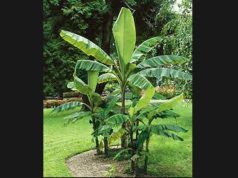ধানখেতি | Paddy Essay in Assamese
(ৰচনা ১)
পৰিচয়:
ধান এবিধ ওখধি তৃণ জাতীয় গছ। পৃথিৱীৰ প্ৰায় সকলোবোৰ দেশতে ধান খেতি হয় যদিও নিৰক্ষীয় অঞ্চলত ধানখেতি বৰ ভাল হয়। ধানৰ পৰা চাউল হয় আৰু চাউলৰ পৰা ভাত আৰু নানা ধৰণৰ খাদ্য সম্ভাৰ প্ৰস্তুত কৰা হয়।
প্রকাৰ:
আমাৰ দেশত হোৱা ধানেবাৰক প্ৰধানলৈ দুটা প্ৰজাতিত ভাগ কৰিব পাৰি যেনে- আহু ধান আৰু শালি ধান। আহু ধানতকৈ শালি ধানৰ উৎপাদন ভাল হয়। শালি ধানৰ আকৌ নানা প্ৰকাৰ আছে যেনে- জহা, আইজং, চেপা, জয়া, মালা, পানী শইলা ইত্যাদি।
খেতি কৰাৰ পদ্ধতি:
ধান সাধাৰণতে জ’হকালিন শস্য। আমাৰ দেশত ফাগুন আৰু চ’ত মাহত আহু ধানৰ বীজ সিঁচা হয়। বীজ সিঁচাৰ আগতে মাটিডৰা ভালকৈ চহ কৰি ল’ব লাগে। সাধাৰণতে বীজ সিঁচাৰ পঁচিশ দিনমান পিছৰ পৰা ঘাহঁ-বন চাফা কৰি থাকিব লাগে। আহুধান বীজ সিঁচাৰ দিনৰ পৰা এশ দিনৰ ভিতৰত পকে। আহাৰ আৰু শাওন মাহত আহু ধান চপোৱা হয়।
আনহাতে আমাৰ দেশত আহাৰ মাহৰ পৰা শালি ধানৰ বতৰ আৰম্ভ হয়। শালি ধান ৰুৱৰ বাবে প্ৰথমে বোকা মাটিত কঠিয়া সিঁচিব লাগে। কঠিয়া সিঁচাৰ পৰা বিশৰ পৰা ত্ৰিশ দিনৰ ভিতৰত পথাৰত ৰুই দিব লাগে। সাধাৰণতে অলপ দ মাটিত বা অলপ পানী থকা মাটিত শালি ধানৰ কঠিয়া ৰুব লাগে। শাওন আৰু ভাদ মাহ শালিধানৰ কঠিয়া ৰুৱাৰ উপযুক্ত সময়। শালি ধান আঘোণ আৰু পুহ মাহত পকে।
উপকাৰিতা:
পৃথিৱীৰ প্ৰায় পঞ্চাশ শতাংশ মানুহৰ প্ৰধান আহাৰ ভাত। ধানেই হৈছে ভাতৰ প্ৰধান উৎস। ধানৰ পৰা চাউল হয় আৰু চাউলৰ পৰা আমি ভাত পাওঁ। ইয়াৰ উপৰিও চাউলৰ পৰা বিবিধ সোৱাদযুক্ত খাদ্যসম্ভাৰ প্ৰস্তুত কৰা হয়, যেনে- চিৰা, মুৰী, পিঠা, সান্দহ ইত্যাদি। ধানৰ পতান বা তুঁহ খেতিত সাৰ হিচােপ ব্যৱহাৰ কৰাৰ উপৰিও কিছুমান মানুহে ইন্ধন হিচাপেও ব্যৱহাৰ কৰে।
সামৰণি:
বৰ্তমান বিশ্বত জনসংখ্যা বৃদ্ধিৰ লগে লগে ধানৰ চাহিদাও বাঢ়ি আছে। কিন্তু দেখা যায় ধানৰ উৎপাদন ইয়াৰ চাহিদা অনুপাতে বৃদ্ধি পোৱা নাই। বহুতো দেশত উৎপাদন বৃদ্ধিৰ আশাত খেতিত নানা ধৰণৰ ৰাসায়নিক সাৰ প্ৰয়োগ কৰাৰ ফলত খেতিৰ উৰ্বৰা শক্তি নষ্ট হৈছে। সেয়ে আমি ধান উৎপাদনৰ প্ৰধান উৎস মাটিৰ গুণা-গুণ ঠিক ৰাখি ইয়াৰ উৎপাদন বৃদ্ধি কৰাৰ প্ৰতি সচেষ্ট হোৱা উচিত। 0 0 0
ধানখেতি
(ৰচনা ২)
ধানখেতি হৈছে অসমৰ এক প্ৰধান খেতি। ধানখেতি অসমৰ লোকৰ জীৱন আৰু সংস্কৃতিৰ এক অঙ্গ। ধানখেতি অসমৰ মাটিত বহুদিন ধৰি চলি আহিছে। ধানখেতি অসমৰ অৰ্থনীতিৰ এক গুৰুত্বপূর্ণ অংশ।
ধানখেতিৰ প্ৰকাৰ
ধানখেতি দুটা প্ৰকাৰৰ হয়। এইবোৰ হৈছে:
- আউশ ধান: আউশ ধান বসন্তৰ সময়ত বোৱা হয়। এই ধানৰ খেতি মাৰ্চ মাহত আৰম্ভ হয়। আউশ ধানৰ খেতি জুন মাহত শেষ হয়।
- আমন ধান: আমন ধান বৰষুণৰ সময়ত বোৱা হয়। এই ধানৰ খেতি জুন মাহত আৰম্ভ হয়। আমন ধানৰ খেতি নৱেম্বৰ মাহত শেষ হয়।
ধানখেতিৰ প্ৰক্ৰিয়া
ধানখেতিৰ প্ৰক্ৰিয়া কেইবাটাও ধাপত বিভক্ত। এইবোৰ ধাপ হৈছে:
- মাটি সাজু কৰা: ধানখেতিৰ বাবে মাটি সাজু কৰা হয়। মাটি চাফা কৰা হয়। মাটিত গাঁৱা দিয়া হয়।
- বীজ বোৱা: ধানৰ বীজ বোৱা হয়। বীজ বোৱাৰ সময়ত মাটিত পৰ্যাপ্ত পানী থাকে।
- চৰা ৰোপণ: বীজ পৰা ধানৰ চৰা ৰোপণ কৰা হয়। চৰা ৰোপণৰ সময়ত মাটিত পৰ্যাপ্ত পানী থাকে।
- সেচ দিয়া: ধানখেতিত সেচ দিয়া হয়। সেচ দিয়াৰ বাবে পানী ব্যৱস্থা কৰা হয়।
- গছৰ যত্ন লোৱা: ধানৰ গছৰ যত্ন লোৱা হয়। গছৰ পৰা আগাছা আঁতৰোৱা হয়। গছত পৰ্যাপ্ত পুষ্টি দিয়াৰ বাবে সাৰ ব্যৱহাৰ কৰা হয়।
- ধান কটা: ধান পকা সময়ত ধান কটা হয়। ধান কটা সময়ত পৰ্যাপ্ত লোকৰ প্ৰয়োজন হয়।
- ধান মাৰা: ধান কটা ধান মাৰা হয়। ধান মাৰাৰ বাবে মাৰা মেচিন ব্যৱহাৰ কৰা হয়।
- ধান শুকোৱা: ধান শুকোৱা হয়। ধান শুকোৱাৰ বাবে পৰ্যাপ্ত ৰ’দৰ প্ৰয়োজন হয়।
- ধান সংৰক্ষণ: শুকোৱা ধান সংৰক্ষণ কৰা হয়। ধান সংৰক্ষণৰ বাবে পৰ্যাপ্ত ঠাইৰ প্ৰয়োজন হয়।
ধানখেতিৰ গুৰুত্ব
এই খেতি অসমৰ অৰ্থনীতিৰ এক গুৰুত্বপূর্ণ অংশ। ধানখেতি অসমৰ লোকৰ জীৱন আৰু সংস্কৃতিৰ এক অঙ্গ। ধানখেতি অসমৰ খাদ্যৰ প্ৰধান উৎস। ধানখেতি অসমৰ লোকৰ জীৱন নিৰ্ভৰশীল।
ধানখেতিৰ সমস্যাসমূহ
ধানখেতিত কেইবাটাও সমস্যা থাকে। এইবোৰ সমস্যা হৈছে:
- পানীৰ অভাৱ: ধানখেতিত পানীৰ অভাৱ থাকে। পানীৰ অভাৱৰ বাবে ধানখেতি ক্ষতিগ্ৰস্ত হয়।
- সাৰৰ অভাৱ: ধানখেতিত সাৰৰ অভাৱ থাকে। সাৰৰ অভাৱৰ বাবে ধানখেতি ক্ষতিগ্ৰস্ত হয়।
- আগাছা: ধানখেতিত আগাছা থাকে। আগাছাৰ বাবে ধানখেতি ক্ষতিগ্ৰস্ত হয়।
- ৰোগ-ব্যাধি: ধানখেতিত ৰোগ-ব্যাধি থাকে। ৰোগ-ব্যাধিৰ বাবে ধানখেতি ক্ষতিগ্ৰস্ত হয়।
উপসংহাৰ
ধানখেতি অসমৰ এক প্ৰধান খেতি। ই অসমৰ লোকৰ জীৱন আৰু সংস্কৃতিৰ এক অঙ্গ। ধানখেতি অসমৰ অৰ্থনীতিৰ এক গুৰুত্বপূর্ণ অংশ। ধানখেতি অসমৰ খাদ্যৰ প্ৰধান উৎস। ধানখেতি অসমৰ লোকৰ জীৱন নিৰ্ভৰশীল। ধানখেতিত কেইবাটাও সমস্যা থাকে। এইবোৰ সমস্যা সমাধানৰ বাবে পৰ্যাপ্ত ব্যৱস্থা গ্ৰহণ কৰা উচিত। 0 0 0
ধানখেতি: কিছু তথ্য
- প্ৰধান খেতি: ধানখেতি অসমৰ প্ৰধান খেতি।
- প্ৰধান খাদ্য: ধান অসমৰ লোকৰ প্ৰধান খাদ্য।
- দুটা প্ৰকাৰ: ধানখেতি দুটা প্ৰকাৰৰ হয় – আউশ ধান আৰু আমন ধান।
- মাটি সাজু কৰা: ধানখেতিৰ বাবে মাটি সাজু কৰা হয়।
- বীজ বোৱা: ধানৰ বীজ বোৱা হয়।
- চৰা ৰোপণ: বীজ পৰা চৰা ৰোপণ কৰা হয়।
- সেচ দিয়া: ধানখেতিত সেচ দিয়া হয়।
- গছৰ যত্ন: ধানৰ গছৰ যত্ন লোৱা হয়।
- ধান কটা: ধান পকা সময়ত ধান কটা হয়।
- ধান মাৰা: কটা ধান মাৰা হয়।
- ধান শুকোৱা: ধান শুকোৱা হয়।
- ধান সংৰক্ষণ: শুকোৱা ধান সংৰক্ষণ কৰা হয়।
- সমস্যা: ধানখেতিত পানীৰ অভাৱ, সাৰৰ অভাৱ, আগাছা আৰু ৰোগ-ব্যাধি থাকে।
ধানখেতি: প্ৰশ্ন আৰু উত্তৰ
প্ৰশ্ন: ধানখেতি কি?
উত্তৰ: ধানখেতি হৈছে ধানৰ খেতি। এই খেতি অসমৰ প্ৰধান খেতি।
প্ৰশ্ন: ধানখেতিৰ প্ৰধান প্ৰকাৰ কিমান?
উত্তৰ: ধানখেতিৰ দুটা প্ৰধান প্ৰকাৰ আছে – আউশ ধান আৰু আমন ধান।
প্ৰশ্ন: আউশ ধান কেতিয়া বোৱা হয়?
উত্তৰ: আউশ ধান বসন্তৰ সময়ত বোৱা হয়। এই খেতি মাৰ্চ মাহত আৰম্ভ হয়।
প্ৰশ্ন: আমন ধান কেতিয়া বোৱা হয়?
উত্তৰ: আমন ধান বৰষুণৰ সময়ত বোৱা হয়। এই খেতি জুন মাহত আৰম্ভ হয়।
প্ৰশ্ন: ধানখেতিৰ প্ৰক্ৰিয়া কি কি?
উত্তৰ: এই খেতিৰ প্ৰক্ৰিয়া হৈছে মাটি সাজু কৰা, বীজ বোৱা, চৰা ৰোপণ, সেচ দিয়া, গছৰ যত্ন লোৱা, ধান কটা, ধান মাৰা, ধান শুকোৱা আৰু ধান সংৰক্ষণ।
প্ৰশ্ন: ধানখেতিত কি কি সমস্যা থাকে?
উত্তৰ: এই খেতিত পানীৰ অভাৱ, সাৰৰ অভাৱ, আগাছা আৰু ৰোগ-ব্যাধি থাকে।
প্ৰশ্ন: ধানখেতিৰ গুৰুত্ব কি?
উত্তৰ: এই খেতি অসমৰ অৰ্থনীতিৰ এক গুৰুত্বপূর্ণ অংশ। এই খেতি অসমৰ লোকৰ প্ৰধান খাদ্যৰ উৎস।
প্ৰশ্ন: ধান কটা কেতিয়া হয়?
উত্তৰ: ধান পকা সময়ত ধান কটা হয়। এই সময়ত পৰ্যাপ্ত লোকৰ প্ৰয়োজন হয়।
প্ৰশ্ন: ধান শুকোৱা কিয় প্ৰয়োজন?
উত্তৰ: ধান শুকোৱা হয় যাতে ধান সংৰক্ষণ কৰিব পৰা যায়।
আশা কৰোঁ এই প্ৰশ্ন আৰু উত্তৰবোৰ আপোনাৰ বাবে সহায়ক হ’ব। 0 0 0
Paddy: Essy in English
Paddy, the rice grain before being husked, is the most widely consumed staple food worldwide, particularly in Asia. It is a versatile grain, used in various culinary preparations, from simple boiled rice to elaborate dishes like biryani and sushi. Paddy cultivation has a long history, dating back thousands of years, and it continues to be a significant agricultural activity in many countries.
Cultivation and Processing
Paddy is a water-loving crop, requiring abundant irrigation throughout its growth cycle. It is typically grown in flooded fields, known as paddies, where the water helps to control weeds and maintain soil moisture. The cultivation process involves several stages, including land preparation, sowing, transplanting seedlings, weeding, and harvesting. After harvesting, the paddy grains are dried and then processed to remove the husk, resulting in the polished rice we are familiar with.
Nutritional Value
Paddy is a rich source of essential nutrients, including carbohydrates, protein, vitamins, and minerals. It is a good source of complex carbohydrates, providing sustained energy. Paddy also contains vitamins like B1, B2, and niacin, as well as minerals like iron, zinc, and magnesium. The bran layer of the paddy grain, which is often removed during processing, is particularly nutritious, containing fiber, antioxidants, and phytochemicals.
Cultural Significance
Paddy has deep cultural significance in many Asian societies. It is often associated with abundance, prosperity, and fertility. In some cultures, paddy is used in religious ceremonies and rituals. The cultivation of paddy has shaped the landscapes and economies of many Asian countries, and it continues to be an important part of their agricultural heritage.
Environmental Impact
While paddy cultivation has provided sustenance for billions of people, it also has environmental implications. The intensive use of water and fertilizers can lead to water pollution and soil degradation. The cultivation of paddy in tropical and subtropical regions contributes to methane emissions, a potent greenhouse gas. However, sustainable farming practices, such as organic farming and the use of water-saving irrigation techniques, can help to mitigate the environmental impact of paddy cultivation.
The Scientific Species of Paddy: Oryza sativa
Oryza sativa is the scientific name for the most widely cultivated rice species. It is a member of the grass family (Poaceae) and is a staple food for billions of people worldwide.
Subspecies of Oryza sativa
There are two main subspecies of Oryza sativa:
- Oryza sativa ssp. japonica: This subspecies is often referred to as “japonica rice” or “short-grain rice.” It is characterized by its shorter grains, stickiness when cooked, and is commonly used in sushi, mochi, and other Asian dishes.
- Oryza sativa ssp. indica: Also known as “indica rice” or “long-grain rice,” this subspecies has longer, slender grains that tend to be less sticky. It is widely cultivated in tropical and subtropical regions and is used in various cuisines, including Indian, Thai, and Vietnamese.
Genetic Diversity
Oryza sativa exhibits significant genetic diversity, which has allowed breeders to develop numerous cultivars with different characteristics, such as grain size, shape, texture, aroma, and resistance to pests and diseases. This genetic diversity is a result of thousands of years of domestication and cultivation in various regions.
Importance of Paddy Cultivation
Paddy cultivation has played a crucial role in human history, providing a reliable food source for countless generations. It is a major agricultural commodity and contributes significantly to the economies of many countries. However, the cultivation of paddy also faces challenges, such as water scarcity, soil degradation, and the overuse of pesticides and fertilizers. Sustainable agricultural practices are essential to ensure the long-term viability of paddy cultivation and the food security of billions of people.
FAQs
What is the difference between paddy and rice?
Paddy refers to the unhusked rice grain, while rice is the polished grain obtained after removing the husk.
Where is paddy mainly cultivated?
Paddy is mainly cultivated in Asia, particularly in countries like China, India, Indonesia, Bangladesh, and Vietnam.
What is the nutritional value of paddy?
Paddy is a good source of carbohydrates, protein, vitamins, and minerals. It is particularly rich in B vitamins and minerals like iron and zinc.
What are the environmental impacts of paddy cultivation?
Paddy cultivation can lead to water pollution, soil degradation, and methane emissions. However, sustainable farming practices can help to mitigate these impacts.
What is the cultural significance of paddy in Asia?
Paddy has deep cultural significance in many Asian societies, associated with abundance, prosperity, and fertility. It is often used in religious ceremonies and rituals.
I hope this essay and the FAQs provide a comprehensive overview of paddy!
নোট: যদি আপুনি উক্ত ৰচনাখন পছন্দ কৰে বা ভাল পাইছে অনুগ্ৰহ কৰি আপোনাৰ মতামত জনাব। আমি যিকোনো ধৰণৰ গঠনমূলক মতামতক আদৰণি জনাওঁ । 0 0 0
বি. দ্র. উক্ত ৰচনাটি ৰাব্বি মছৰুৰ ৰচিত ‘অসমীয়া ৰচনা শিক্ষা‘ গ্রন্থৰ অন্তর্গত।
ধানখেতি
ৰাব্বি মছৰুৰ ৰচিত কেইখনমান গ্রন্থ:
- অসমীয়া লেখক পৰিচয়
- বিশ্ব ব্যক্তি পৰিচয়
- অসমীয়া ৰচনা শিক্ষা
- অসমীয়া ভাব সম্প্রসাৰণ
- এক গুচ্ছ জীৱনী
- শিশু পদ্য
- অসমীয়া অনুবাদত বিশ্ব চুটি গল্প
- অসমীয়া অনুবাদত বিশ্ব কবিতা
- অসমীয়া অনুবাদত বিদেশী কবিতা
- পৃথিৱীৰ আৰু মোৰ (কাব্য সংকলন)
- সংহতিৰ ভাড়া ঘৰ ( কাব্য সংকলন)
- মোৰ গীত তোমাৰ সুৰ (গীতি কবিতা সংকলন)
- তুমি কেমন প্রেমিক (বাংলা কাব্য সংকলন)
- তোমাকে বলছি (বাংলা কবিতা সংকলন)
- ফণী শৰ্মাৰ নাটক ‘চিৰাজ’-এক সমালোচনা
- হীৰেন ভট্টাচাৰ্যৰ কবিতা -এক বিশ্লেষণাত্মক অধ্যয়ন
- ইছমাইল হোছেইনৰ কবিতা : এক বৈশিষ্ট্যমূলক আলোচনা
- ইছমাইল হোছেইনৰ কবিতা: এক বিশ্লেষণাত্মক অধ্যয়
- অসমীয়া উপন্যাস সমালোচনা
- অসমীয়া চুটি গল্প সমালোচনা
- মৌলানা আবুল কালাম আজাদ (চমু জীবনী)
- অসমীয়া কবি প্রতিভা (সাহিত্য সমালোচনা)
- নির্বাচিত অসমীয়া কবিতা সমালোচনা
- অসমীয়া ব্যাকৰণ ক অংশ
- অসমীয়া ব্যাকৰণ খ অংশ
- নির্বাচিত অসমীয়া কবিতাৰ মূলভাব
- আৰবী সাহিত্যৰ ইতিহাস:প্রাক-ইসলামী যুগ (৫০০-৬২২ খৃ:)
- আৰবী সাহিত্যৰ ইতিহাস:প্রাথমিক ইসলামী যুগ (৬২২-৬৬১)…
Some Important Books for Students:
- Advertisement Writing
- Amplification Writing
- Note Making
- Paragraph Writing
- Notice Writing
- Passage Comprehension
- The Art of Poster Writing
- The Art of Letter Writing
- Report Writing
- Story Writing
- Substance Writing
- School Essays Part-I
- School Essays Part-II
- School English Grammar Part-I
- School English Grammar Part-II..
অতিৰিক্ত অনুসন্ধান:
- অসমীয়া ৰচনা
- নির্বাচিত অসমীয়া সাহিত্য, ৰচনা আৰু ব্যাকৰণ
- তোমাৰ প্রিয় সাহিত্যিক
- জৈৱ বৈচিত্ৰ্য
- জনসংখ্যা বৃদ্ধিৰ সমস্যা







